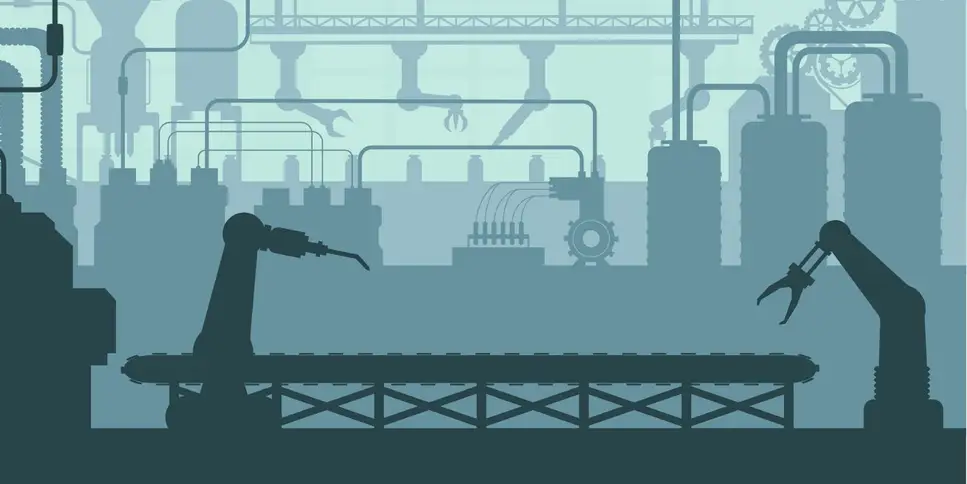Chatea con Ava - Tu consultor de negocios IA
¡Hola, soy Ava, tu guía de IA para potenciar tu negocio!
Ya sea que dirijas una empresa o sueñes con iniciar una, estoy aquí para hacer realidad tu visión gracias a los freelancers que usan IA. Comparte los objetivos de tu negocio y juntos crearemos un proyecto en los que nuestros talentosos freelancers puedan ofertar. ¡Hagamos realidad tu visión!
Tengo un negocio
Estoy comenzando un negocio
Algo salió mal al enviar la conversación a tu correo electrónico. Por favor, intenta de nuevo más tarde.
Solo puedes guardar tu conversación una vez por hora. Por favor, intenta de nuevo más tarde.
Tu conversación es demasiado corta. Sigue chateando con Ava para poder guardar.
How lean manufacturing can make your product better
If you're selling a physical product, the way it's manufactured will impact your speed to market, your customers' satisfaction and your bottom line.
30 ene 2020 • Lectura de 5 minutos
R
Closed User
Falló el copiado al portapapeles. Intenta de nuevo después de ajustar tus permisos.
Copiado al portapapeles.

Lean manufacturing can make a huge difference to your bottom line
If you've developed a physical product, you're going to need to understand manufacturing. The way your product is manufactured will have an enormous impact on your profitability, your speed to market and your customers' satisfaction. That's the purpose of a method called lean manufacturing.
The history of lean manufacturing
Lean manufacturing is a methodology originally developed by Toyota. After World War II, Toyota came up with a revolutionary idea on how to reduce waste. The idea was implemented to compete with Western automakers, and soon became a manufacturing method worldwide. The method involved three steps:
The practice focuses on how to add more value by reducing waste, to attain efficiency and, finally, to attain customer satisfaction.
Introduction to lean manufacturing
Often called lean production, lean manufacturing is a series of methods applied to a manufacturing or production activity to minimize the waste and cut cost while ensuring a high quality. From design to production to distribution, the method is applicable to all aspects of business.
Lean Manufacturing ensures continuous improvement to gain system-wide efficiency. It seeks value-based productivity that balances the entire productivity chain. If a single manufacturing unit is working more effectively than the other units of the production line, it fails to provide overall efficiency of production. Hence, lean production is about settling for overall production efficiency rather than concentrating on individual unit productivity.
The objective is to identify the weakest link that holds back the entire activity process. It’s about how to get most of the available resources and finding better ways to accelerate business performance. Lean practice provides competitive edge by aligning the manufacturing process, from raw material, to end product to customer, along with minimizing waste.
What is waste and how can we minimize it?
Let’s get to the basic understanding of what waste is. Any activity in the manufacturing process that adds no value and increases the cost and selling price of the product is waste. Here are seven wastes of lean manufacturing which you can eliminate.
Transportation
Transportation includes the movement of raw materials, work in process and the finished goods from warehouse to the final destination. Sometimes unnecessary movement of vehicles adds up to lots of wastage. An increase in transportation cost is usually due to the following reasons:
Inventory
Often in the manufacturing process, numerous reserves cause potential waste. This excessive inventory can lead towards extra storage expenses. Here are the factors that cause increase inventory waste:
Motion
The excessive movement of machines and labor which does not add any value is also a factor of lean wastage. Reasons for motion wastage are:
Waiting
This refers to the waiting period for the next segment to begin, or for unsold items to move. The factors involved are:
Overproduction
Producing materials beyond needed is overproduction. It creates a surplus amount of inventory, and hence, waste. Causes are:
Over-processing
Adding extra resources and value to products which are not required by the customers creates unnecessary wastage which must be taken into account. Over-processing is due to:
Defects
All activities that involve repairs, rework, scrap and defective items are another form of waste. Factors include:
How to minimize waste
All this waste can be reduced if we properly follow the points given below:
FOR TRANSPORTATION: make sure the warehouses are nearby, streamlining the flow of raw materials to final goods.
FOR INVENTORY: procure the materials when needed, eliminate excessive steps involved in production.
FOR MOTION: organize all the work areas in a systematic way, right placement of equipment.
FOR WAITING: ensure the continuous flow of necessary goods without any ambiguity, consistent instructions at each step of manufacturing.
FOR OVERPRODUCTION: controlling the surplus production, adjust the pace of production with demand of consumers.
FOR OVER-PROCESSING: better research on what customers buy, ensure ways to regulate the manufacturing process.
FOR DEFECTS: be cautious when designing a product, avoiding complex designs to avoid frequent defects, looking for what causes the defects.
Lean manufacturing methods
As lean manufacturing's goal is value creation, here are some tools which are used in lean manufacturing operations:
5S
5S includes five guidelines:
Just in Time
Just in Time is a method for inventory control. JIT ensures customer demands, production quantity and its deliverance. JIT means that adequate stock is available in the warehouse.
Gemba
Gemba is a Japanese word for "the real place." In lean practice it refers to the manufacturing field. The Gemba Walk revolves around the philosophy that one must regularly visit the site to address daily issues.
Value Stream Mapping
This tool involves mapping out various diagrams. It depicts each process in value creation and evaluates all the steps to minimize wastage and inefficiencies
Kaizen
Kai's literal meaning is "change," while zen means "good." This is a concept to ensure continuous improvement. This tool involves the process of documenting, aligning procedures and getting feedback from all the members of the organization.
Bottleneck
The Bottleneck method is used to identify all the weak areas that hold back the process of producing goods. It often determines the slowest process. Speeding up the one or two units can increase the speed of the entire production process.
Kanban
This Japanese system refers to signs. It’s a scheduling process which determines what to produce, how to produce and how much to produce.
Continuous Flow
This method is related to JIT and Kanban, and involves the integration of all production elements through continuous examination, evaluation and improvement.
How does it affect your physical product
When we think of lean, we equate it with a minimization of waste. But in reality our goal is not waste elimination, but value creation. Adopting the tools above, companies can see huge benefits to their products.
It improves the quality of your product
Improved efficiencies create better ways for employees to think innovatively. This is how we gain business agility through the process of creating value.
Better lead times
As the production lines are streamlined without any ambiguity, your firm can quickly respond to fluctuations of customer demand or other variables that occur spontaneously. This will result in fewer delays in getting your product to market.
Sustainability
The more efficient the process is, the more sustainable your business and product. Less waste of product and improved adaptability means less waste of raw materials and energy.
Increased profits
This is the most obvious benefit of lean manufacturing. Less waste equals more profit. If you can keep selling your product for the same price, but produce it cheaper and more efficiently, that's more money in your pocket.
Final words
The overall purpose of going lean is to learn what our customer needs and wants; to increase the value of your product and deliver it on time to overcome whatever problems your customer might be facing. Applying this methodology gives you a competitive edge by cutting your cost. If you carefully examine each step of production, you may be able to discard unnecessary processes and procedures. And who doesn't want to be faster, better and more efficient?
Cuéntanos qué trabajo necesitas encargar
Ingresa el nombre de tu proyecto
Historias relacionadas
Habla con uno de nuestros Copilotos técnicos para que te ayude con tu proyecto
Artículos recomendados solo para ti

Before you throw yourself into a new business idea, take a step back and ask yourself some tough questions.
5 min read

The way we work is changing. Whether you're an employer or an employee, mastering the gig economy is the key to survival
5 min read

Hiring freelancers for a project can save you time and money, but it's important to understand how to get the best results
4 min read

Struggling to come up with the best idea? Our exhaustive guide runs through the idea generation process to help you tap into your inner Steve Jobs.
10 min read
¡Gracias! Te hemos enviado un enlace para reclamar tu crédito gratuito.
Algo salió mal al enviar tu correo electrónico. Por favor, intenta de nuevo.
Cargando visualización previa
Permiso concedido para Geolocalización.
Tu sesión de acceso ha expirado y has sido desconectado. Por favor, inica sesión nuevamente.




